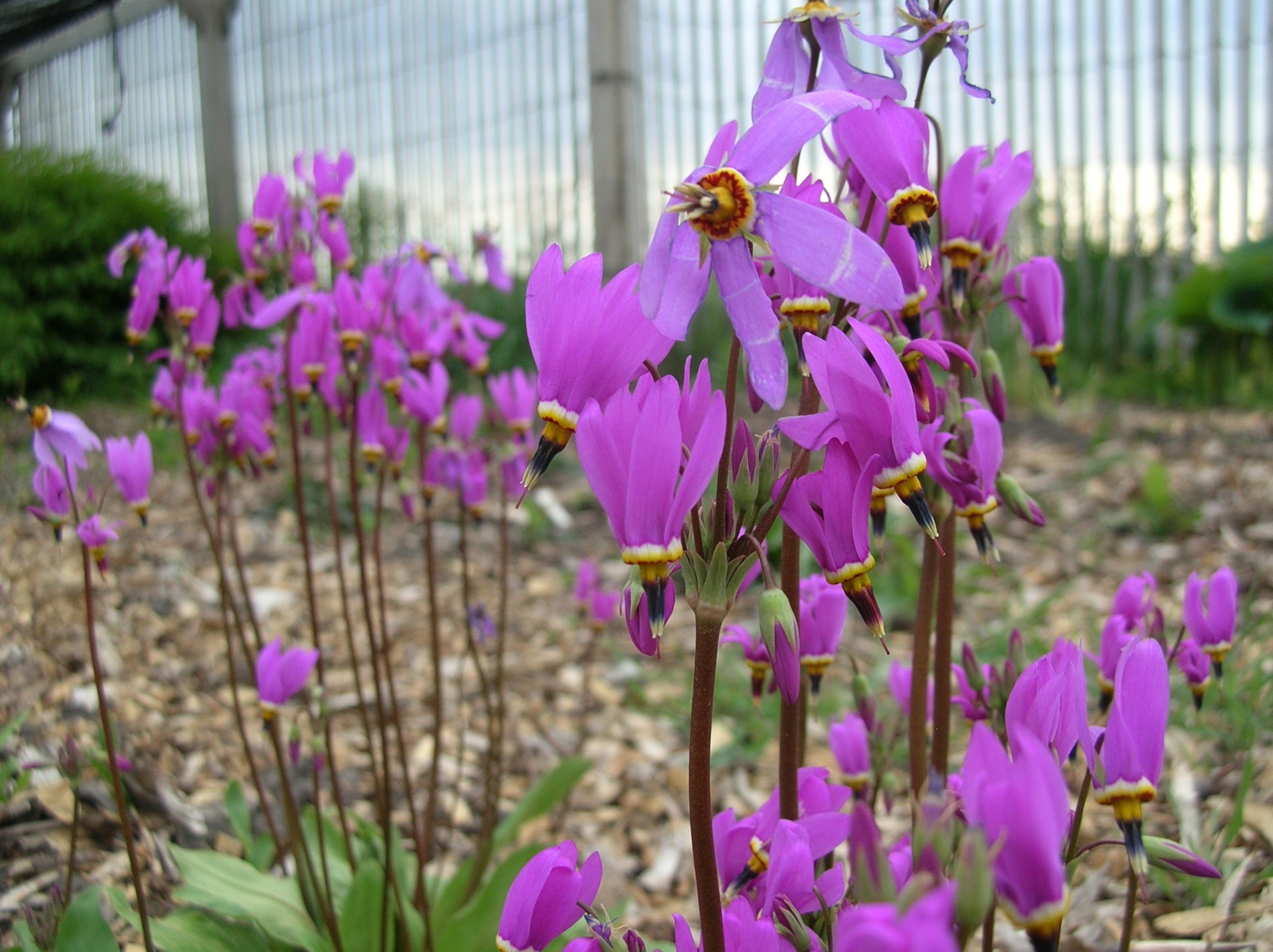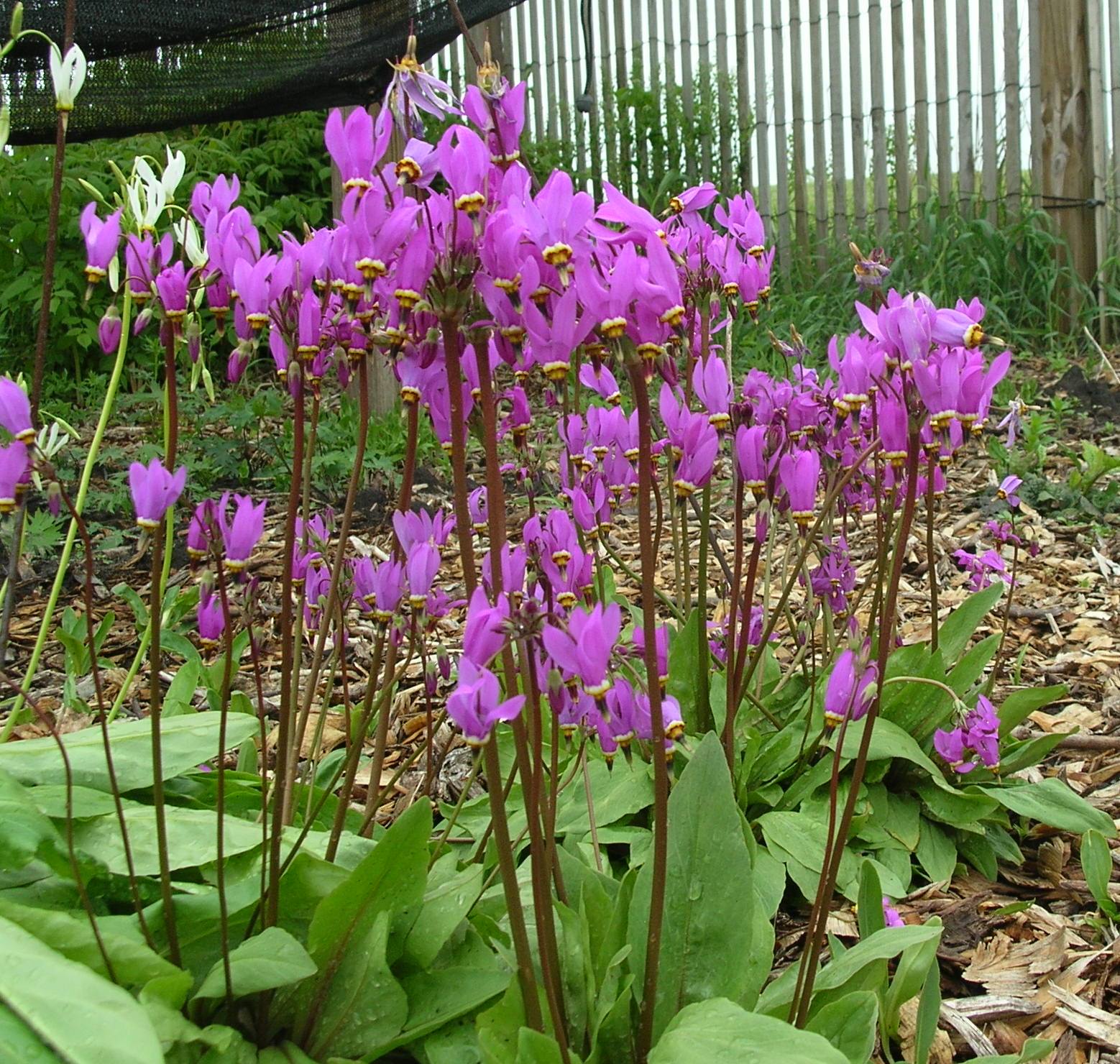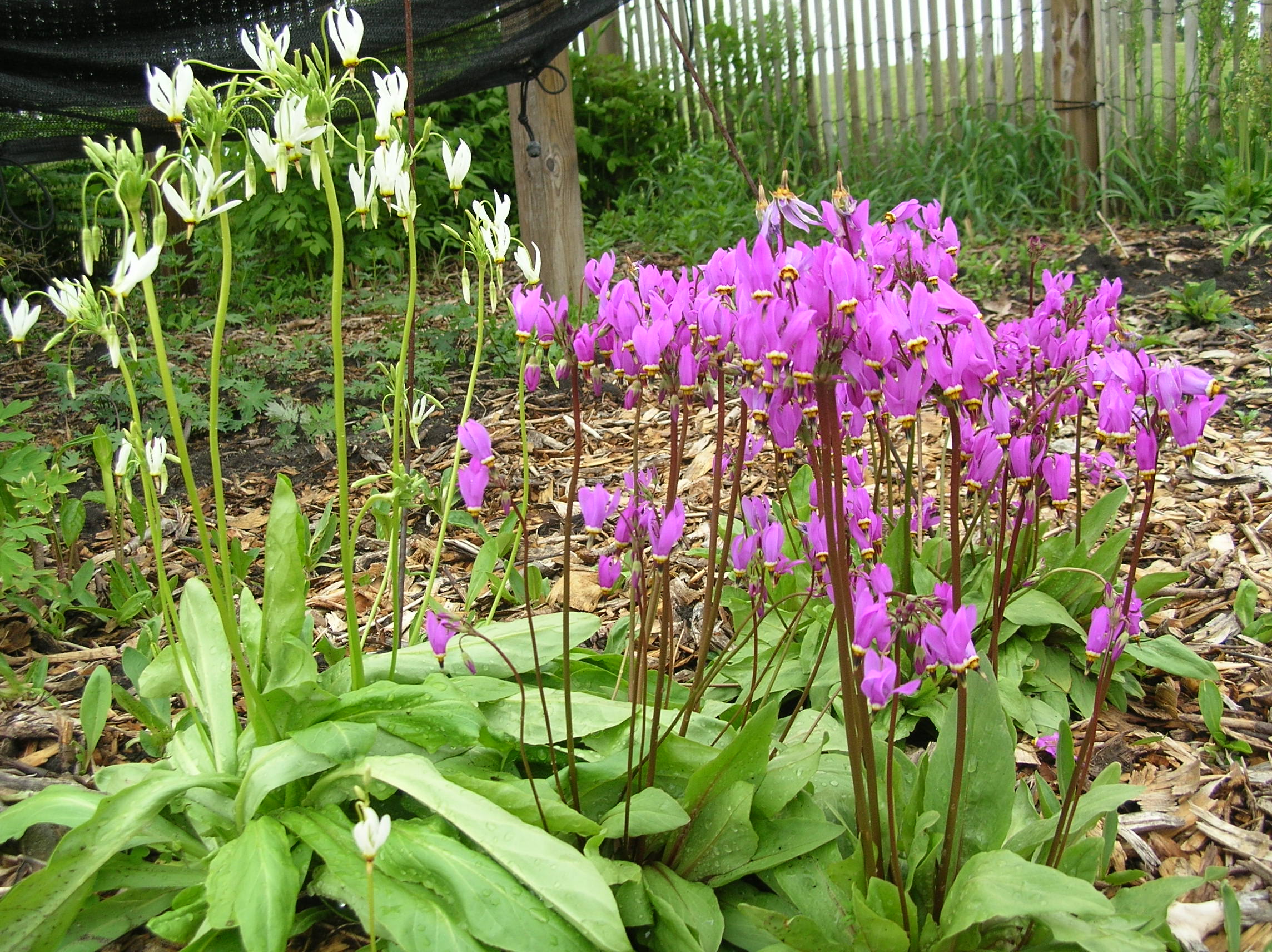Description
OUT OF STOCK – EMAIL FOR AVAILABILITY
Only available for purchase in spring – Ephemeral
Rosy-lilac reflexed flowers, looking like a descending shuttlecock, dangle from stems in spring
Rosy-lilac reflexed flowers, looking like a descending shuttlecock, dangle from stems in spring
OUT OF STOCK – EMAIL FOR AVAILABILITY
Only available for purchase in spring – Ephemeral
Rosy-lilac reflexed flowers, looking like a descending shuttlecock, dangle from stems in spring
Magenta-purple upfacing cups, June – October, non-stop. Wonderful for rock gardens or as a ground cover.
Size: 6" x 12"
Care: Full sun in well-drained soil. Drought tolerant
Native: Missouri to Texas
Although an American prairie native, Callirhoe is named for the daughter of the Greek river god. Teton Dakota burned its dried root for smoke to cure the common cold and aches and pains. First collected by Thomas Nuttall in 1834. Ferry’s 1876 catalog described it as having “a trailing habit, of great beauty.” William Robinson extolled Prairie mallow as “excellent for the rock garden, bearing a continuous crop of showy blossoms from early summer till late in autumn.”
OUT OF STOCK
Grown for its silver-grey foliage in the garden & dried in arrangements
Size: 3’ x 2’ and spreading
Care: sun in well-drained soil
Native: Colorado south to Texas, west to California.
Blackfoot cleaned themselves with this as part of religious rituals. California’s Shasta Indians prepared dead bodies to be buried with the leaves. HoChunk made a smudge to revive the unconscious. Cahuilla Indians made baskets and roofs and walls of their homes with the stems. First collected for gardens by Thomas Nuttall in early 1800’s. Artemisia named for the wife of Mausolus, king of Caria, who began using another Artemisia. Miller 1768.
Indigo blue racemes in June followed by ornamental black seed pods on this perennial that looks like a shrub. This is a legume that improves soil fertility by making nitrogen available to the Baptisa and surrounding plants. Internationally known garden designer Piet Oudolf’s 100 “MUST HAVE” plants, Gardens Illustrated 94 (2013).
Size: 3' x 3'
Care: Full sun sandy soil. Heat and drought tolerant, with no staking needed.
Native: Eastern United States, Wisconsin native.
Wildlife Value: Food source for several caterpillars and nectar for a number of butterflies.
Awards: Received England’s Royal Horticultural Society Award of Merit. Perennial Plant Association Plant of the Year Award, 2010. Missouri Botanic Garden Plant of Merit
Baptisia is Greek meaning to dye referring to use of the plant as a substitute for indigo dye. Cherokee used Baptisia australis for a number of illnesses: cease mortification, cure toothaches and induce vomiting. Collected by John Bartram (1699-1777) plant explorer and colonial nurseryman by 1748.
OUT OF STOCK
Briliant orange with purple spots, turks-cap type lily blooming in late summer to early fall
Size: 10’ x 12”
Care: shade to sun in moist, acidic soil
Native: from VT to Fl & west to Mississippi River, incl. Wisconsin
Lilium was named for the Greek word for smooth, polished referring to its leaves. Collected before 1762. Sold in America’s 1st plant catalog, Bartram’s Broadside, 1783. L.H. Bailey (1913): “The most magnificent and showy of native North American species, well worthy of extensive cultivation.” Found growing in moist meadows from Massachusetts to Indiana and Alabama. In 1665 John Rea called it the “Virginia Martagon,” In 1738 colonial botanist John Bartram sent it to his “brothers of the spade” in London where it caused a sensation. A challenge to grow, it demands well-drained, acid soil and plenty of moisture.



